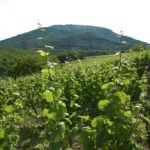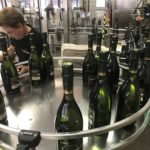WELCOME TO

Spotlight Of The Month – this section is dedicated to our partners!

History
Viticulture would date back to the 1st century on the right bank of Gironde Estuary. The records attest that in the 12th century, the Bourg wine region already extended until the districts of Saint Ciers de Canesse and Villeneuve, so there is no doubt that vine growing on the lands known as Rousselle existed several centuries before the noble house was built.
About the “noble house of Rousselle”, its first owner seemed to be My Lord Jean de Tortaty, chevalier in the 17th century. At that time, the district of Saint Ciers de Canesse (village where Rousselle is settled) used to count only three noble houses, including Rousselle. During the renovation of the house in 2000, the date 1636 has been found engraved over the lintel of the back door. It is necessary to precise that the house, such as it looks now, reveals it has been erected in two distinct and successive periods. The back of the building is clearly the oldest, from 17th century style, while the front looks comprar levitra like a typical mansion of the 19th century. This architectural “assembly” must be the consequence of renovation, extension or modernization work, undertaken during the 19th century.
About the viticultural production of Château Rousselle, its wine was classified from 1868 by Féret and Cocks as First Bourgeois, which was the highest level of classification of the AOC. During the 19th century, Château Rousselle became a “pilot” vineyard to experiment its cellar’s modernization. However, the vines of Rousselle have not been spared by the phylloxera crisis, which reached the area around 1875.
During the 20th century, Château Rousselle has been owned by several families.
The vineyard belongs to the Lemaitre family since 1999. After searching everywhere in France, for more than two years, a vineyard with precise criterions – such as very good terroir, old vines and buildings, all in one piece property – Vincent Lemaitre “felt in love” with Château Rousselle, despite it was in a pitiful state. But in less than five years, Vincent led all the renovation works of the cellar and the house, he changed entirely the way to take care of the vines and learnt how to make his own wine with the help of an oenologist. And today, thanks to Vincent, Château Rousselle recovered its esthetical and gustative nobility.
TERROIR
Vincent Lemaitre and his team cultivates today 23 hectars of vineyards. The vineplants are growing on the distinctive hills of the area between Bourg and Blaye.
Château Rousselle – AOC côtes de Bourg
20,5 hectars in AOC Côtes de Bourg (among them 18 hectars in one piece). Those parcels spread into the territory of 3 villages : Saint Ciers de Canesse, Villeneuve et Saint Seurin de Bourg. Exposure : north-facing, on the gentle slopes of the hills, 30 to 60 meters above sea level. Vines with a north-facing exposure give tannic red wines. Soil : slopes of limestone covered brown clay.
Climate : temperate, moist and mild climate of the Atlantic ocean.
Vinification
Sorting of the entire harvest by hand on a sorting table.
Cold maceration
Alcoholic fermentation and maceration over an extended period to extract the aromas and give the wine all its strength.
Daily pumping-over (morning and evening) whose duration depends on the volume of the tank.
Malolactic fermentation in new barrels for the tank of merlot intended for “prestige” wine..
THE CELLAR
90% French oak barrels
10% American oak barrels
30% of the barrels are changed every year
According to the wine, aging into barrels lasts from 8 to 18 months.
Topping-up of the barrels every 15 days
Racking every 6 months
After aging, each batch of wine is kept into concrete tank before final blending.



























